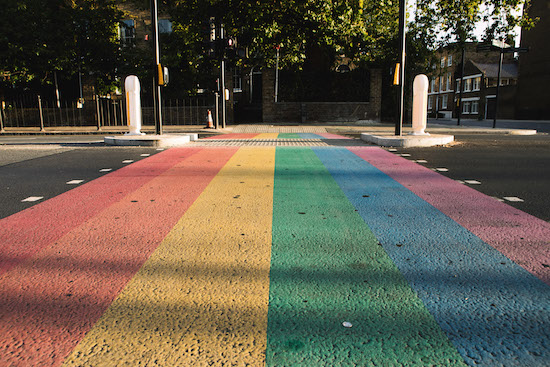All photos by Tim Boddy
“If you were to just do a list of places you would visit in London, it would be a very small book,” says Alim Kheraj about his upcoming guide to queer life in London. Although initially aiming to be a guide tracking queer venues across London’s many boroughs, Queer London quickly became much more, tracking the past, present, and future of queer spaces in the city and celebrating some of the people behind them.
“I don’t proclaim the book to be a kind of historical text, because it’s definitely not that,” says Kheraj over Zoom. Yet despite this, Queer London succeeds at highlighting the layers and layers of history hidden in London’s LGBTQ spaces, be they bars, bookstores, or art deco halls which were home to drag balls decades ago.
Indeed, Kheraj himself admits that there are simply too many fascinating stories hidden in London’s queer history and in the larger-than-life personalities of some of its residents.
How did you decide to approach this broad topic?
I was approached to write the book by the publisher (ACC Art Books). And they brought a copy of one of their art guides with them to the initial meeting. I saw how the writer had melded useful information about galleries with background information about artists and movements within London. So I went away and I spent quite a long time trying to figure out how best to approach the book.
I always wanted the book to have this slight below the surface element with a bit of history, and spotlights on specific people. Just because a lot of people don’t know where to find it. I don’t proclaim the book to be a kind of historical text, because it’s definitely not that. It’s just got little bits of history that were relevant to it being a guidebook.
I know that you’ve said that this is very much a new edition of a guide. Did you by any chance look at some of the former guides to know how to approach this differently?
There hasn’t been an LGBTQ guide to London on the market for quite a while, maybe even for ten years. So I went to the Bishopsgate Institute, and asked them to get me all the guides from the 1980s and the 1990s. There were a few. There was Kennedy’s Gay Guide, which ran until the 1990s. That was really influential in terms of figuring out what the tone would be, because it was quite an irreverent and cheeky little guide.
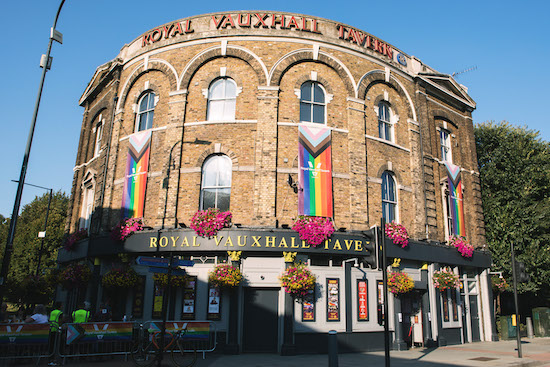
If you were to just do a list of places you would visit in London, it would be a very small book. There’s not that much. In the last decade or so, nearly 60% of all LGBTQ venues have closed down. I wanted to keep it just focused on LGBTQ specific things. And there are some places that have a queer past and a queer presence. I think I bought some of that in.
Is there perhaps an autobiographical aspect of the book, in some ways as to some of the venues or locations?
I wouldn’t say autobiographical, but the introduction definitely speaks to my experience in London.
Was it challenging to map out spaces in East London, which are perhaps less documented?
Yes, and no. I’ve got hours’ and hours’ worth of research and hardly any of that information features. In terms of East London, it’s not like Soho or West London, just because the documentation of it is a bit harder. There’s lots of things with the war, and the bombings, but also it was an area that was deprived, and it was full of immigrants. So documentation of that area is patchier than perhaps elsewhere. And up until the 1980s, queer venues weren’t explicit. Most of them had blocked out windows and you had to know where they were. A lot of that information is hard to come by. You do have to dig deep, but there’s lots of people who have done a lot of research looking into those periods. I did heavily rely on what’s out there.
What are some of the things you wish you’ve left in?
If I had the space, I would have included more of the profiles. I spent nearly three hours on the phone with Princess Julia. And she was just amazing. She was really there, from the beginning, she talked me through every single scene that has happened in London.
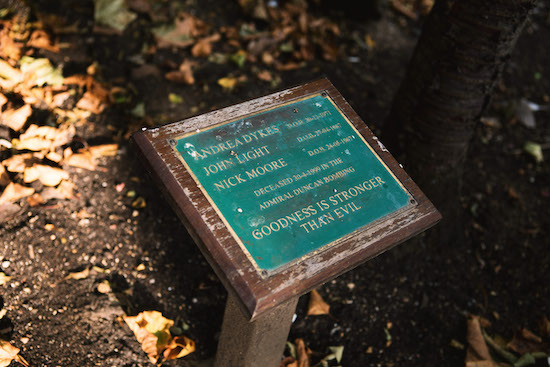
Could you tell me more about the Drag Balls in West London?
So that was the Drag Balls of the Porchester Hall. They ran from 1968 to the mid 80s. Coincidentally, last year, at the BFI Flare Film Festival, there was a film that was due to premiere called Drag Ball made by John Samson. He was a fringe documentary filmmaker, and his son found this reel of film in the basement and it was a documentary about one of these drag balls in 1980. I was doing this book research, and then I had the opportunity to watch this film, which unfortunately didn’t actually end up premiering because of COVID. But I got to actually see what they were like and I spoke to this very nice man who lives on the Isle of Wight, who told me incredible stories about his times going to the balls.
They were just so British, there was no glamour – although I think people would have called it glamorous. But it was just people sitting around smoking fags, and they had pint glasses of ale. The actual Hall itself looks a bit like a school hall. People did travel from all over the country. They were sort of white van drivers who would come in and they’d get changed in the bogs. There was a competition like they had in ballrooms in New York, but this wasn’t like it. They would walk up a makeshift little catwalk that wasn’t really a catwalk, and then they would get judged, and you would win twenty quid or a weekend away in a caravan.
How important were individuals to shaping queer life in London?
If you look at things historically, there are people who are really important in terms of pushing things forward. But with these things, we find that it’s never usually just one person, it’s usually tons from a group. There might be one person who becomes the figurehead of that. But it usually comes about from a group and they sense a need.
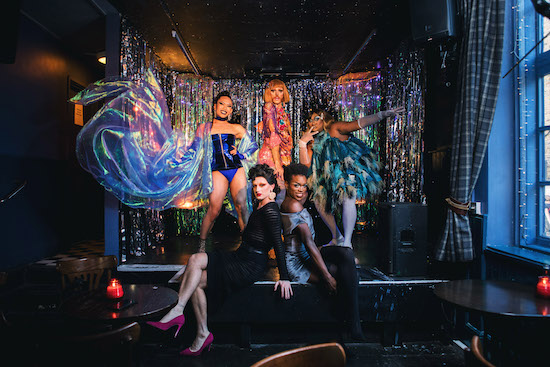
What were some of the challenges that you faced in making this book as inclusive as possible?
I was really lucky to talk to some incredible people – especially lesbians, queer women and non-binary people who don’t have physical spaces. If you look at history, there has always been a lack of spaces for gay women, so I was really conscious of that. To prepare for the listings, I put together these ginormous spreadsheets with hundreds and hundreds of entries. But they were all coming up as venues predominantly catering for gay men.
Historically, the term gay was an umbrella term for a long period. I needed to be careful that the diversity of historical venues wasn’t eradicated. It was really important to make sure that I had as many entries as possible for queer women and lesbians. And finding trans nightlife was difficult too, because again, there just isn’t that much of it. There aren’t nights at mainstream venues – until very recently – that centre on trans and non-binary people.
There’s this certain bittersweet feeling that some of these spaces are just disappearing. Could you argue that this change shapes the nature of queer life in London?
I think it’s a two-sided discussion. Diminishing space in cities for marginalised groups is a real issue. I’m glad to see that there has been at least some attempt – whether it will be successful or not – to kind of stem that from the mayor’s office. But what the closure of these large commercialised venues can facilitate – it’s not that this necessarily will happen – but it can facilitate the diversification of that scene.
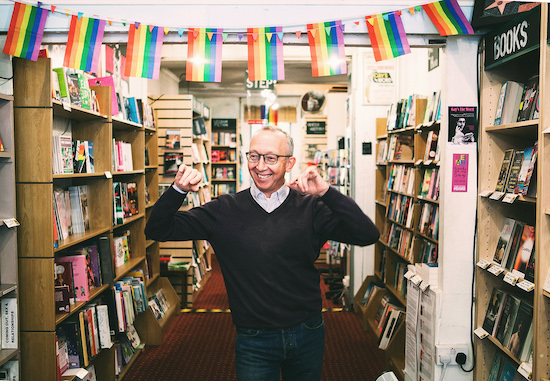
With the shrinking of queer nightlife in London, what I have noticed is that while the physical permanent spaces have gone, there has been this boom in alternative nightlife that is inclusive and community-led. And I think those things only crop up when the other thing starts to fade away. Because there’s this need to do it ourselves. And hopefully, those things will lead to permanent spaces. And with most big cities as well, with gentrification and development happening at such a rapid rate, people aren’t given the opportunity to open their spaces permanently. The problem is that the lack of permanent spaces makes visibility harder. And without that, the city loses some of its magic. So you need both.
What do you think the book tells us about the future of queer London?
Hopefully, the book demonstrates that out of a decline can come something new, and that what comes out of that is more inclusive, more diverse, more community-led. Not about big business and capitalism, but about putting things back in and cultivating safe and inclusive spaces for LGBTQ Londoners.
I think it’s cyclical. When Soho became tired, East London became this sort of place, and then that’s gone down. And now you’ve got these little outcrops everywhere, and hopefully they will find a solid place elsewhere in the city. It’s like a constant evolution.
Queer London by Alim Kheraj is published by ACC Art Books on 12 April

